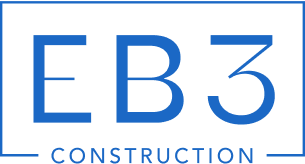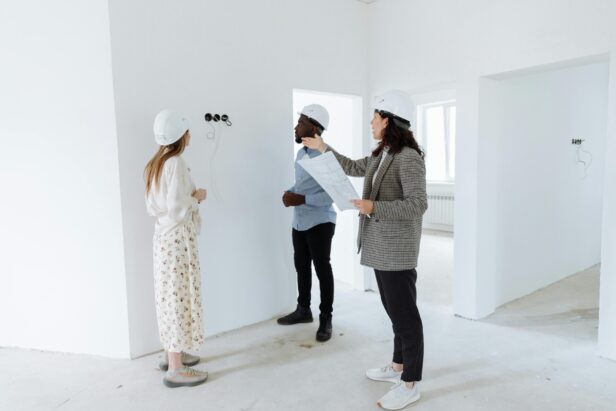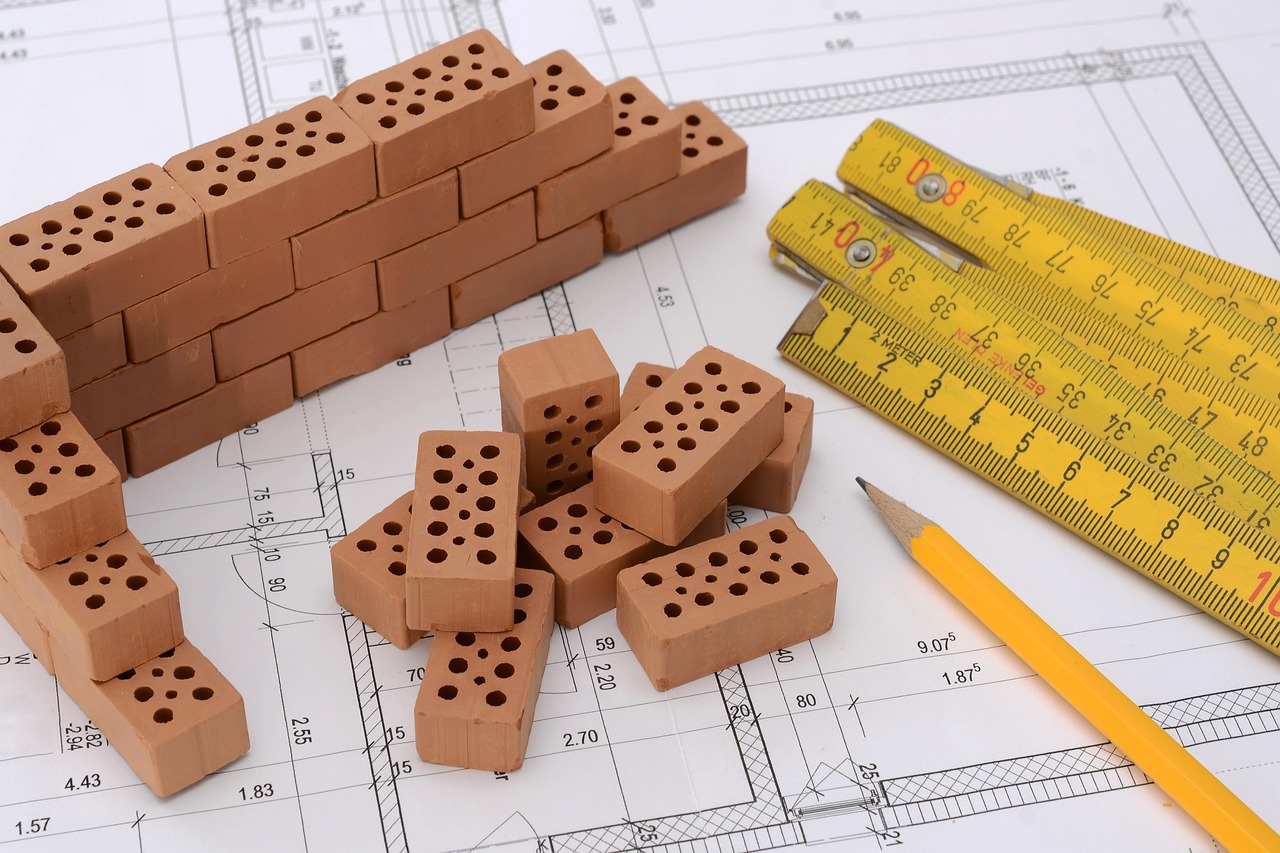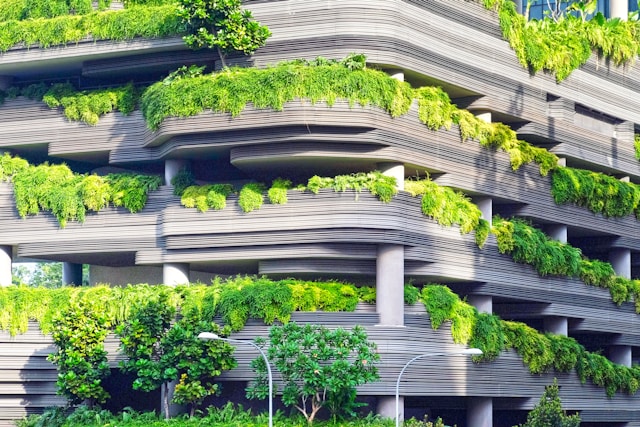Commercial building upgrade contractors handle the complex process of transforming leased commercial spaces into functional business environments. These specialized professionals oversee tenant improvements, corporate build-outs, and office renovations that convert raw space into productive workplaces.
We partner with commercial realtors, property managers, and owners to execute projects that align with operational requirements, budget constraints, and tight timelines. Our services span from minor updates like fresh paint and flooring to comprehensive renovations involving structural modifications and ground-up construction work, all designed to minimize disruption to ongoing business operations.
Which Tenant Improvements And Upgrades Are Most Common?
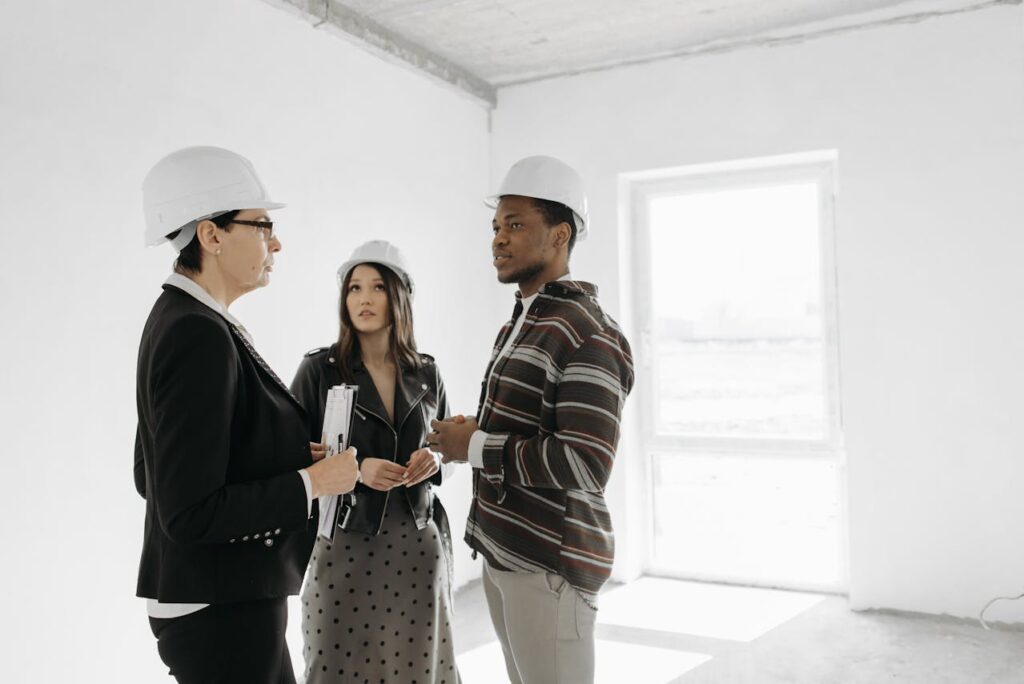
The most common tenant improvements focus on transforming raw commercial space into functional environments. We regularly handle projects involving moving or adding walls to create private offices, conference rooms, or open collaboration areas that match operational workflows.
Flooring upgrades represent another frequent request. New carpet installation provides comfort and sound absorption for office environments, while tile work suits high-traffic areas or spaces requiring easy maintenance. We coordinate these installations with the existing building systems to minimize disruption during business hours.
Interior Modifications That Transform Space
Painting walls, ceilings, and moldings ranks among the most impactful improvements we deliver. Fresh paint creates a professional appearance and allows businesses to incorporate their brand colors throughout the workspace. We handle surface preparation, primer application, and finish coats that meet commercial durability standards.
Ceiling tiles removal and installation often accompanies lighting updates. We replace outdated drop ceiling systems with modern acoustic tiles that improve sound control and visual appeal. This work requires coordination with HVAC and electrical systems located above the ceiling plane.
Built-in fixtures add permanent value to commercial spaces. We install custom shelving, reception counters, and storage solutions that maximize square footage efficiency. These elements become integral parts of the space rather than temporary furniture pieces.
Systems And Infrastructure Upgrades
Plumbing and electrical work forms the backbone of most tenant improvement projects. Electrical upgrades include adding outlets for modern technology needs, installing dedicated circuits for specialized equipment, and updating lighting systems for energy efficiency. Plumbing modifications range from simple fixture updates to complete restroom renovations.
Decorative elements help businesses establish their identity within leased space. We install accent lighting, architectural details, and branding elements that create memorable environments for employees and customers. These features must comply with building codes and lease agreements.
Window modifications include adding or removing openings to improve natural light or privacy. We use precision cutting techniques to create new window openings while maintaining structural integrity. Window treatments and glazing updates help control lighting and temperature throughout the workspace.
Project Scope Considerations
Energy efficiency improvements reduce long-term operational costs for tenants. We install LED lighting systems, programmable thermostats, and efficient HVAC components that lower utility bills while improving comfort levels. These upgrades often qualify for local utility rebates and incentives.
Most tenant improvements must align with existing lease terms and building codes. We review lease agreements to understand restrictions on exterior modifications or changes that might affect neighboring tenants. Building codes govern everything from fire safety systems to accessibility requirements, and we ensure all work meets current standards.
Aesthetics, energy efficiency, and comfort drive most tenant improvement decisions. Property owners and tenants benefit when these projects enhance the space’s functionality while reducing long-term maintenance and operational costs.
How Are Project Delivery And Management Handled?
We leverage design-build delivery to streamline the entire construction process under one contract. This integrated approach makes us the single point of contact for architecture, engineering, construction, permitting, and zoning approvals. Property owners and developers work directly with our team instead of managing multiple separate contracts for different project phases.
Our design-build model accelerates project timelines by overlapping design and construction activities. While architects finalize interior layouts, we can simultaneously begin permitting processes and coordinate with subcontractors. This parallel workflow reduces overall project duration compared to traditional design-bid-build methods that require sequential completion of each phase.
Comprehensive Project Management Support
We manage all aspects of project execution through our dedicated project management approach. Our team coordinates subcontractors and vendors to ensure work proceeds according to the established schedule. We handle labor sourcing, equipment logistics, and material deliveries to maintain continuous progress without disruption to ongoing business operations.
Budgeting and planning receive ongoing attention throughout the project lifecycle. We provide realistic scheduling that accounts for permit approval timelines, material lead times, and coordination requirements between different trades. Quality assurance protocols ensure all work meets specifications and building code requirements before final acceptance.
Technology Integration For Project Control
We utilize industry-standard construction management software to maintain project visibility and control. Procore serves as our central platform for tracking progress, managing expenses, and coordinating approvals across all project stakeholders. Bluebeam enables collaborative document review and markup capabilities for design coordination.
Raken provides daily reporting and progress documentation through mobile-friendly interfaces that work directly from job sites. BuildingConnected streamlines our vendor and subcontractor procurement processes to ensure competitive pricing and qualified team selection. These integrated systems create real-time transparency for property owners and decision-makers throughout construction phases.
A dedicated project manager serves as the primary liaison between our construction team and the property owner. This individual maintains regular communication schedules, addresses issues as they arise, and ensures all project milestones align with the original timeline commitments. The project manager also coordinates inspections, manages change orders, and oversees the final closeout documentation process.
What Codes, Compliance, And Special Facility Needs Matter?

Commercial building projects require careful attention to regulatory compliance from the earliest planning stages. We coordinate with local authorities and review applicable codes to establish clear requirements before construction begins. This approach helps avoid delays and ensures installations meet standards on the first inspection.
ADA Compliance Requirements
ADA upgrades focus on providing equal access throughout commercial spaces. Restroom modifications typically include installing grab bars at heights between 33 and 36 inches above the floor, ensuring proper clearances around fixtures, and mounting sinks no higher than 34 inches. We verify that doorway widths meet the 32-inch minimum and that thresholds remain below the half-inch maximum for exterior doors.
Wheelchair ramps require precise slope calculations and construction details. We build ramps with slopes no steeper than 1:12 ratio and include handrails on both sides when the rise exceeds six inches. ADA parking spaces need proper dimensions and clear access aisles, with appropriate signage mounted at least 60 inches above ground level. Visual indicators like tactile signage help visitors navigate spaces independently.
Restaurant And Food Service Specifications
Restaurant construction involves multiple specialized systems that must work together safely. Electrical installations often require higher amperage circuits for commercial equipment, along with properly graded circuits to handle peak loads during service hours. We coordinate with health department inspectors to ensure ventilation systems meet local requirements for air changes and filtration.
Plumbing systems in food service facilities require grease traps, floor drains with proper slopes, and backflow prevention devices. We install hand-washing stations at required intervals and ensure water temperatures meet health code standards. Kitchen layouts must provide adequate spacing between equipment and maintain clear pathways for staff movement during busy periods.
Cleanroom And Laboratory Standards
Specialized facilities demand precise environmental controls and contamination prevention measures. Semiconductor cleanrooms require HEPA filtration systems, static-free flooring materials, and carefully controlled air pressure differentials between rooms. We work with engineers to design proper air flow patterns that prevent particle contamination during manufacturing processes.
Pharmaceutical and biotech laboratories need specialized electrical systems with emergency backup power, laboratory-grade plumbing with emergency shower stations, and chemical-resistant materials throughout. Aerospace and automotive testing facilities often require vibration isolation systems and specialized utility connections for testing equipment. Food processing areas combine sanitation requirements with temperature control systems and washable surface materials.
We evaluate existing building conditions and adjacent zoning restrictions during preconstruction planning. This assessment identifies potential conflicts with neighboring uses and helps determine whether structural modifications will support new equipment loads and environmental systems.
What Does The Tenant Improvement Process Involve?
The tenant improvement process begins when the building owner and tenant agree on modifications needed for the space. We coordinate these discussions to ensure both parties understand the scope and responsibilities before construction starts.
Scope Definition And Planning
Simple tenant improvements focus on cosmetic changes like painting walls or installing new flooring. These updates can often proceed while the space remains occupied. More complex work involves structural modifications such as adding new walls or upgrading electrical systems to support specific business operations.
We evaluate each project’s requirements to determine whether the tenant needs to vacate during construction. Electrical upgrades and major wall installations typically require unoccupied spaces for safety and efficiency. Basic updates like painting can proceed around normal business activities with proper coordination.
Owner And Contractor Coordination
The property owner typically manages the tenant improvement process after reaching agreement with the tenant. We work directly with building owners to handle design development, permit applications, and construction coordination. This approach streamlines communication and ensures all work aligns with building standards and lease requirements.
Our team coordinates with the tenant throughout the process to verify that improvements meet their operational needs. We maintain regular communication about progress, timeline adjustments, and any issues that arise during construction.
Design And Permitting Responsibilities
We handle the complete design and permitting phase for tenant improvements. Our approach includes developing construction drawings that comply with local building codes and the building owner’s requirements. We submit permit applications and coordinate with municipal inspectors to ensure timely approvals.
The design phase ensures that improvements align with the tenant’s business needs while meeting all regulatory requirements. We review lease terms to understand any restrictions on materials, construction hours, or design elements that could affect the project.
Ownership And Lease Considerations
Tenant improvements typically become the property of the building owner once installed. The lease agreement determines whether any fixtures or systems can be removed when the tenant vacates. We review these terms early in the process to avoid conflicts later.
Commercial buildings handle tenant improvements differently than residential properties. Commercial projects involve formal permitting, code compliance reviews, and coordination with building management. Residential modifications are generally simpler and follow different regulatory requirements.
We ensure all improvements comply with lease terms and building standards. This includes verifying that changes don’t impact other tenants or building systems. Our approach protects both the tenant’s investment and the building owner’s long-term interests.
Conclusion And Next Steps
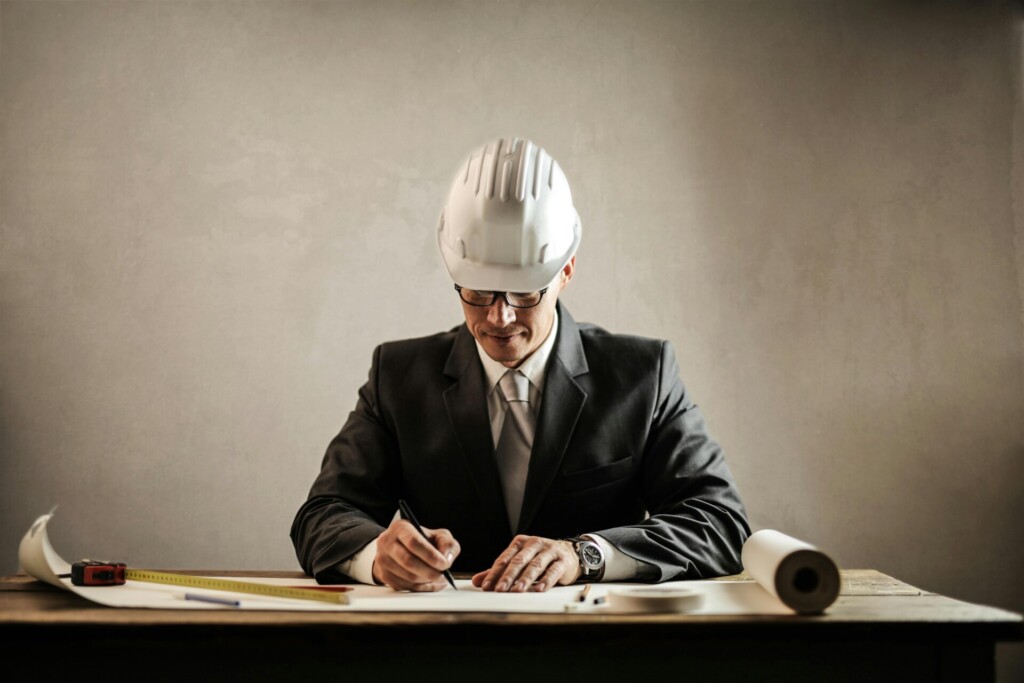
A commercial building upgrade contractor manages the complex intersection of scope, schedule, budget, and code compliance to transform commercial spaces into functional, valuable assets. The process requires coordination across design, permitting, construction, and quality assurance phases while maintaining operational focus on your business needs. Success depends on early engagement and clear communication between all parties involved in the project lifecycle.
Focus on the improvements that will deliver the greatest operational value for your space and tenant requirements. Whether addressing ADA compliance, enhancing energy efficiency, or accommodating new business functions, prioritize upgrades that align with your long-term facility goals and lease obligations. We work with property owners and managers to identify critical improvements and develop realistic timelines that minimize business disruption while ensuring regulatory compliance.
Contact EB3 Construction to coordinate design-build needs, permitting, logistics, and project tracking for your commercial building upgrade.
